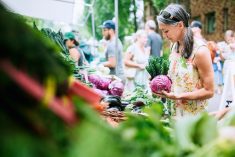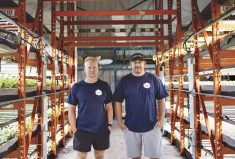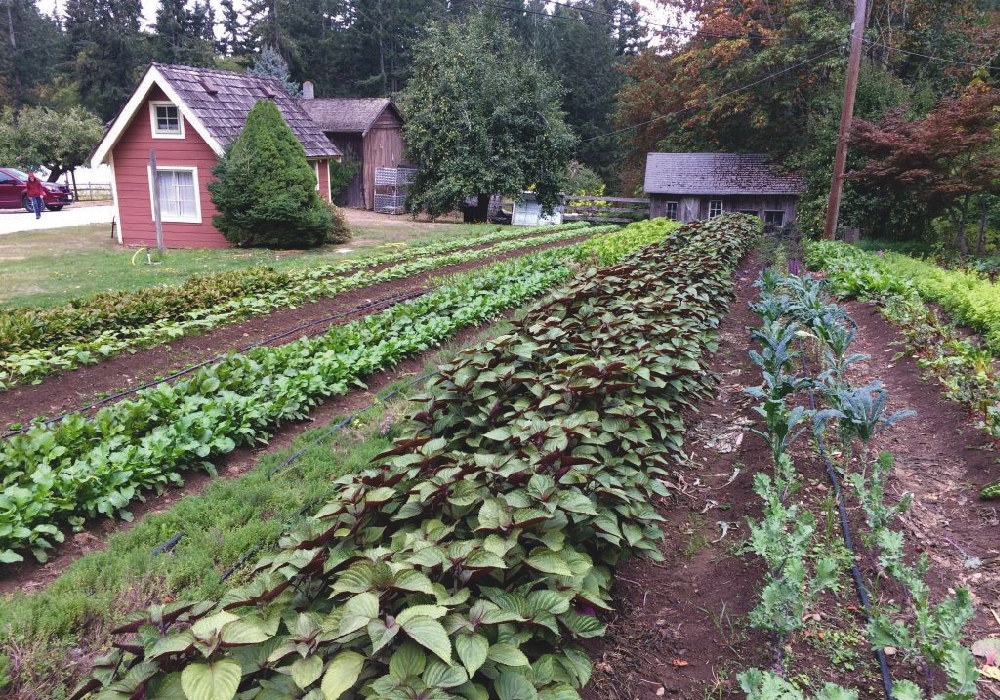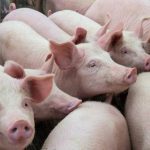Born and raised in Wales, Josh Keepfer grew up seeing how connected the local food sector and the farming community can be. What Keepfer saw, he says, was a “deep understanding” on both sides of plate, both for farmer and consumer.
Farmers won with a local market that gave them loyal and vocal support. Consumers won not just with unbeatable freshness, but also unparalleled selection and quality.
Now, Canada is seeing more of that approach to local food marketing too, partly because foodies like Keepfer have crossed the pond.
Read Also

The big squeeze: How to be fair to siblings during farm succession
Managing sibling business relationships on family farms.
Keepfer might have grown up with a passion for local food, but he went to get his chef’s training in Venice, London and the U.S., followed by work at award-winning restaurants around the globe. Then he and his wife, Chas, bought a farm in Lakefield, Ont., an hour and a half northwest of Toronto, to bring their business idea to life.
That idea was to win on both sides, i.e. by by dishing up some great-tasting food, and by growing it too.
Except it didn’t quite work out that way.
“We started by going to farmers markets within an hour or two radius of us and quickly found we already had fantastic local organic farmers already established,” Keepfer says. “We saw how amazing the farmers in Canada are.”
Josh and Chas spent several years at these markets meeting with vendors, developing relationships, and providing breakfast to-go for those at the market each week.
He was building his company, Kitchen Farmacy, but he was also shifting on the go, based on his observation that the foods that consumers want were already abundant and readily available. The business then focused on the business opportunity. Instead of growing those foods, Keepfer began building supply chains for his growing brand, and he started by talking in-depth with area producers.
Josh and Chas wanted to bring Kitchen Farmacy to more area customers and began their expansion to ready-to-eat, sustainably packaged, and 100 per cent local organic foods. “We used our relationships we were building at area markets to select farmers who are going above and beyond; those who are committed to their craft like I am mine. To me, that is golden,” he says.
“I wanted to work with people who were getting down and dirty versus working with suppliers who aren’t in the fields every day,” Keepfer says. “I was looking for that passion: passion to produce the best products they possibly could.”
It’s a sign of how the local market is evolving. Keepfer’s global culinary training means there are high expectations for Kitchen Farmacy. “It wasn’t just about me having these relationships and visiting the farm,” Keepfer explains. Instead, he needed to understand both the farms and the farmers, he’d become known for producing the best meals.
“That resonated with my cooking of the dishes we were preparing that week,” he says. “It opened up our eyes to these beautiful flavours around us and became this culinary adventure into bringing them to life.”
The logistics of bringing this to life were different in Canada than they had been in the U.K. There, farmers frequently delivered to local chefs and culinary experts, an idea somewhat new to area farmers.
“It was tough because we wanted to work with people who work the fields, but those people are busy working the fields,” Keepfer laughs. “In the beginning, it was a struggle to physically get in the vehicle and drive around to all of these farms just to get the ingredients. That was a big challenge for me. In the U.K, suppliers delivered their food to our doorsteps.” With Kitchen Farmacy now ordering high and consistent volumes, most now do deliver to his doorstep. “A big part of it was showing local farmers how I can promote them and their products through my cooking and our website and seasonal catalog. It was about showing them growth for their operations too.”
At the time, even the most committed farms were facing learning curves of their own. Lunar Rhythm Farms is a certified organic farm that farms traditionally with horses on its 100-acre property in Janetville, Ont. Owner and operator Jessica Foote met Josh and Chas through their children, who began playing with one another each week at the local market while their parents sold the product at their stands.
Again, though, there was a twist.
Like many farmers, Foote hadn’t had the best experience working with chefs and restaurants in the past. She shares stories of deliveries she used to make to restaurants with painfully picked flowers and produce only to be turned down. Or working with restaurant customers who ordered small quantities of her produce so they could put the farm’s name on the menu, but then kept sourcing the majority of their needs from their old distributors. “I’d drop stuff off and go ‘wait a second — that’s not my product,” Foote says. “I was burned many times,”
The relationship between this supplier and chef grew from mutual respect and an admiration for the passion they share for their work. “If you’re not easy to work with and don’t understand the farming side, that everything isn’t cookie cutter and you will need to be flexible, then it’s going to be an impossible relationship,” Foote says.
Flexibility, they both agree, is how you find and nurture mutually beneficial relationships for both agriculture supply and culinary. “We work with all of our suppliers when putting together our seasonal catalog about what products will be available and when each is at their most flavourful,” Keepfer says.
“We’re showing them this isn’t just us doing it, they are a big part of it and our growth too.” On the farming side, Foote says constant communication is also a big part of a successful relationship. “When we have irregularly shaped produce that customers may not want, there is a market for chefs serving this as ingredients within their meals. Or understand their green salad this week may feature more arugula than other leaves based on what we have an abundance of. It is communication and flexibility that make these relationships work.”
Establishing a local supply chain has also never been more critical in the restaurant and culinary field than today with residual pandemic effects. From Keepfer’s perspective, though, the pandemic has simply proved that the best ideas do eventually come to the top.
If they’re winners, ideas that got dissed yesterday can seem cutting edge today.
For the last generation, it didn’t matter where food came from, just like it didn’t matter how far any manufacturer went to find their inputs.
Now there’s a “new” wisdom, Keepfer says. “The key for any business to survive in this climate is to find a good, local supply chain.”
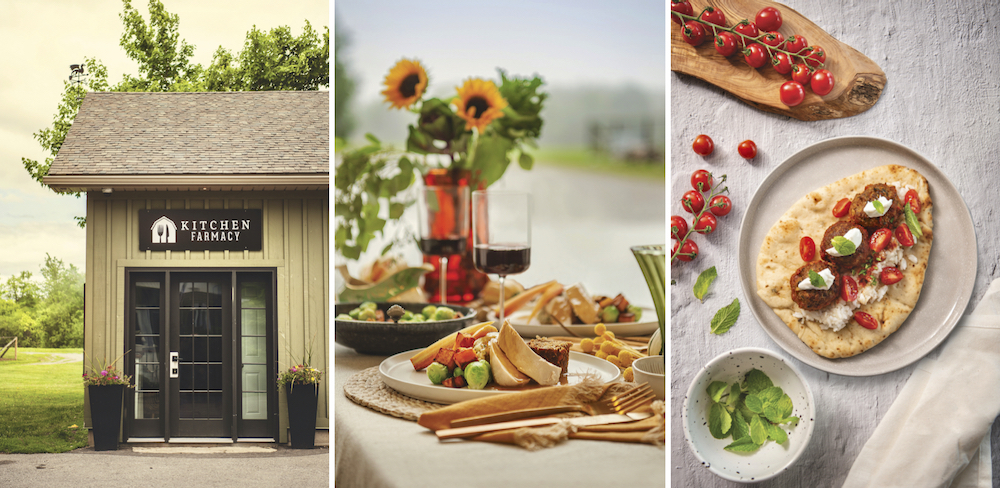
Farm to table?
As in any industry, the buzz phrases that might seem so simple can actually be interpreted and marketed in many different ways. At its core, though, eating local should be sustainable and build a stronger community for both farmers and culinary experts. Here’s how Kitchen Farmacy’s Josh Keepfer puts it all into words:
Eating local
“Some set 150 km as a rule, others say anything less than 700 or an even larger area. So the term is used loosely. The definition is up to the food merchandiser. Buying local means doing your homework. For us, all of our food is from the Kawartha Lakes area and is gathered close to home. Every ingredient we use is authentically locally sourced.”
Knowing your food
“We ask questions about our food. Most of our clients do too. If you are not asking questions about your food, you might be surprised by what you are putting in your mouth. Many of our customers come to us because they have started asking questions about their food … We want to know how our food producers are using their land and if their food is sustainable. We don’t want food to waste gas in travel or waste in packaging. We want a food system that is transparent and builds communities and preserves farmland.”
Eating local builds community
“It is incredible how an idea can build a community … networks of farmers markets are thriving, small grocers are popping up to sell local organic fare. Small entrepreneurial businesses are beginning to provide local organic food to the community. The more the community understands and commits to eating local food the more small businesses come into existence to fill their needs.”
Sustaining ethical business
“You need to develop a community of trusted suppliers for our local and seasonal ingredients. These relationships keep the eating-local community strong, not only for your business but all of their businesses as well. We highly recommend familiarizing yourself with your local businesses, reading about their suppliers and taking advantage of the goodness they have to offer through their businesses.”



